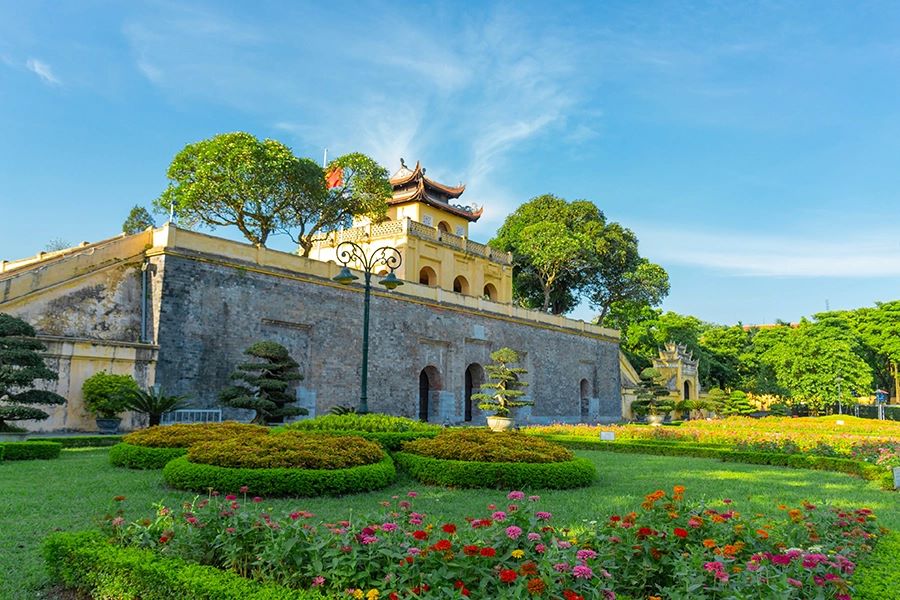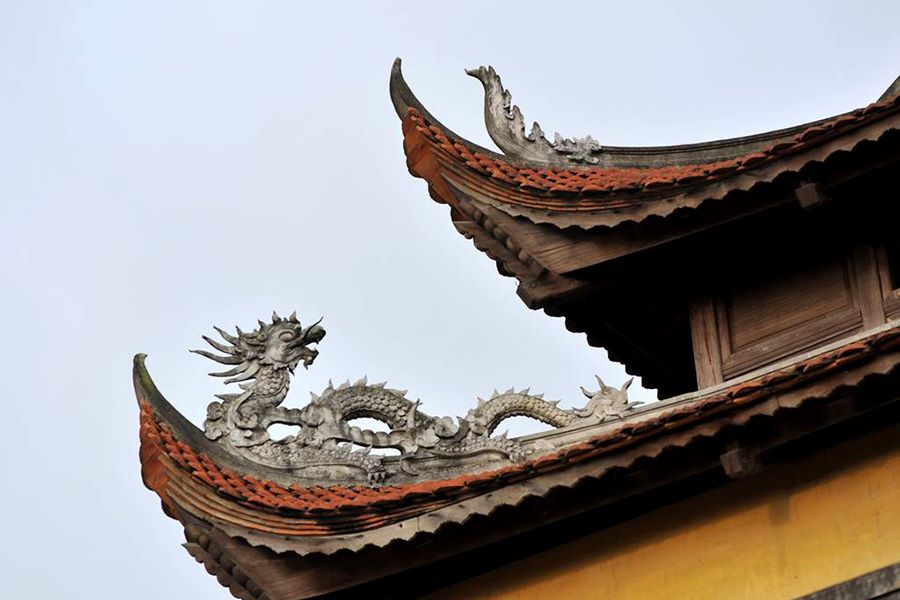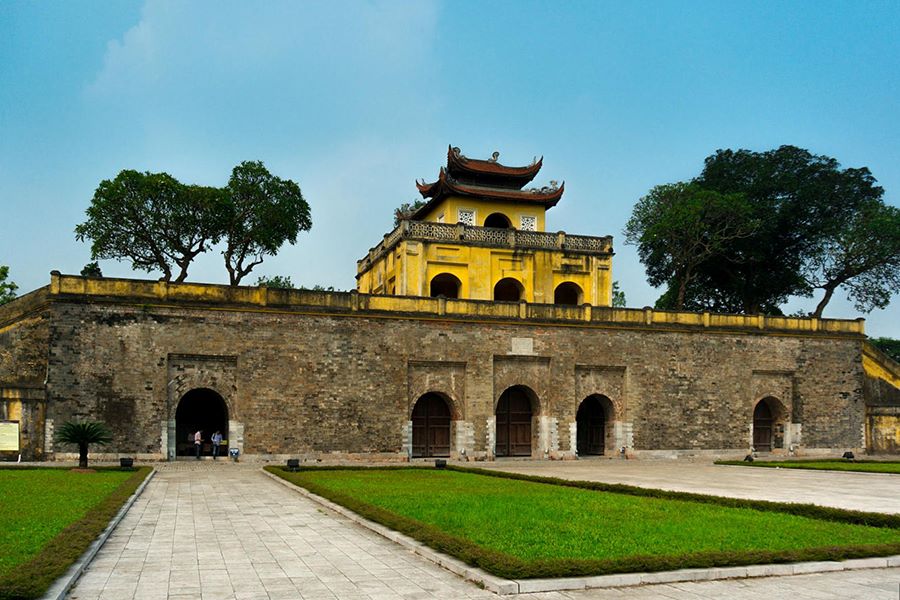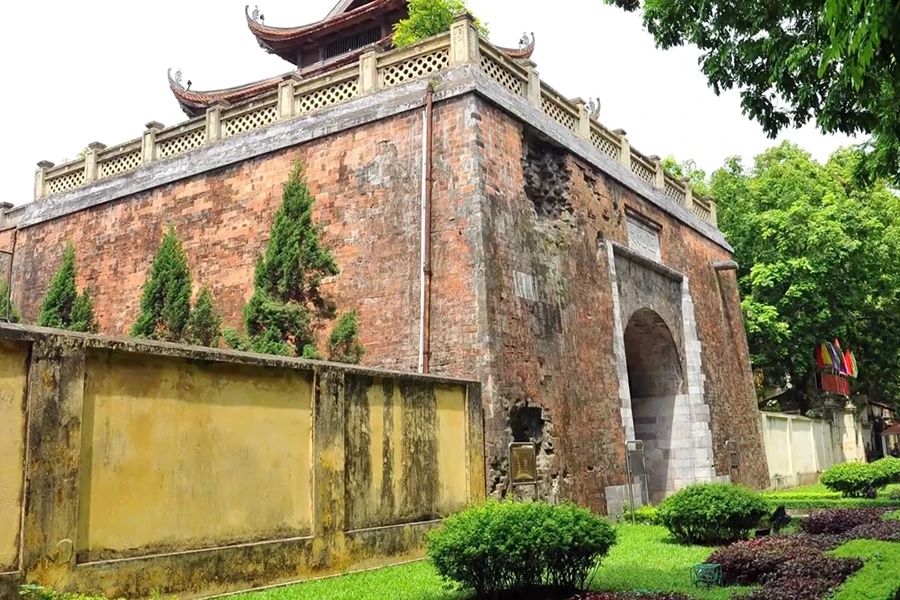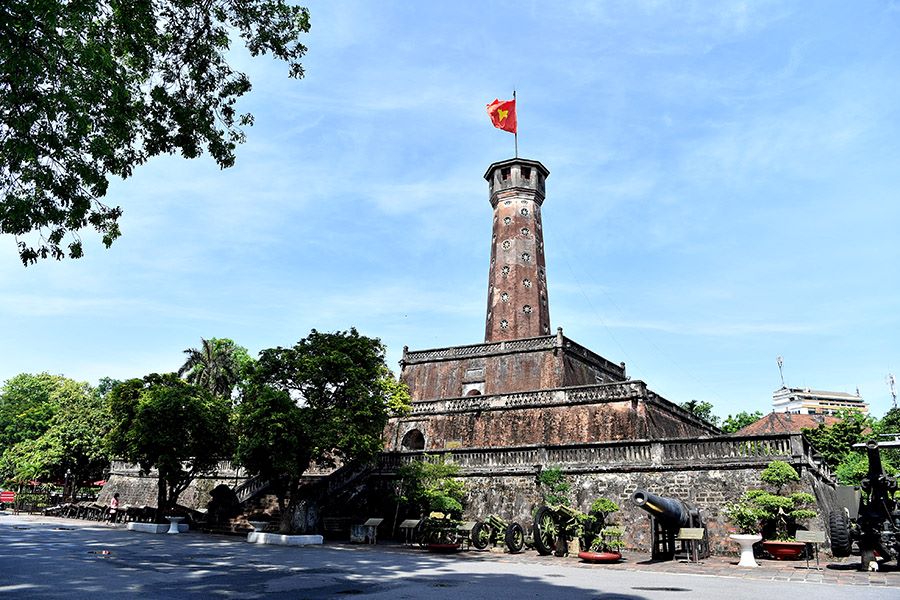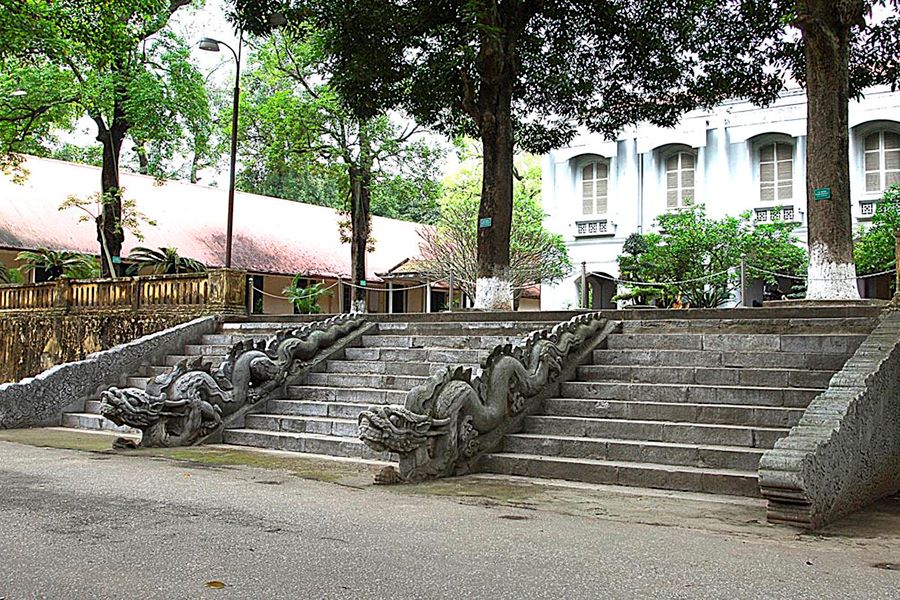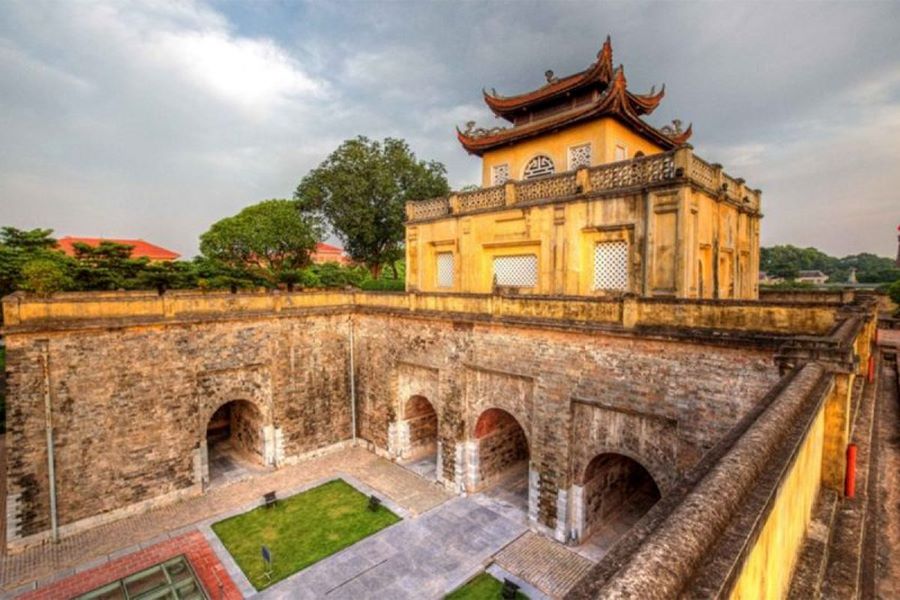The Imperial Citadel of Thang Long is a complex of relics associated with the history of Thang Long - Hanoi. This is a massive structure that was built in many dynasties and has become the most important monument in Vietnam and must-visit destination in Indochina tours.
When was the Imperial Citadel of Thang Long Built?
The relic is located in Ba Dinh District with an area of more than 18000 ha, containing many important historical sites. The Imperial Citadel of Thang Long was built in 1009 after Ly Cong Uan King – the founder of the Ly Dynasty, removed the capital from Hoa Lu (Ninh Binh) to Dai La (Hanoi now).
Experiencing a lot of ups and downs in history, from the Ly Dynasty, Tran Dynasty, Mac Dynasty, and Nguyen Dynasty to the Indochina Wartime until today, it was demolished and rebuilt many times under different dynasties. Imperial Citadel of Thang Long, nowadays, is a lively witness of a length of history of more than 10 centuries.
History of Thang Long Imperial Citadel
In terms of historical importance, the artifacts and relics from the Imperial Citadel of Thang Long portray a history of culture, economics, and government that has been stable across several dynasties. This history begins in the 7th and 9th centuries when the Chinese Tang Dynasty ruled over An Nam's old capital, Dai La. It continues through the Ly, Tran, Early Le, Mac, and Late Le dynasties' metamorphosis into Thang Long Forbidden City, and the 19th-century founding of Thang Long - Hanoi under the Nguyen Dynasty. This historical significance has endured until this day, even during the French colonial era.
When it comes to assessments of cultural value, the treasures kept in Hanoi's Imperial Citadel of Thang Long provide an intriguing illustration of ongoing cross-cultural exchange. The civilizations of the Champa, Chinese, and French have impacted this area. The layout of palace areas, the artwork in buildings, the embellishment of courts, and the design of gardens all reflect different cultural developments throughout history.
Best Things to Do & See in Imperial Citadel of Thang Long
The Main Gate
Doan Mon is situated south of Kinh Thien Palace and shares an axis with the Hanoi Flag Tower. Built of bricks and stones, the main gate is U-shaped, with five gates symmetrically positioned along a central axis known as the Imperial Citadel's "righteousness axis." Doan Mon's main architectural feature is a watchtower gazebo with three rolling arches. Not only was rolling arch architecture elegant, but it also had remarkable load-bearing capacity. Nowadays, Doan Mon's striking and elaborate architecture has made it a popular destination for many travelers wanting to take pictures of the Imperial Citadel of Thang Long.
Northern Gate
Cua Bac, or Chinh Bac Mon, is located on Phan Dinh Phung Street. Rebuilt in 1805 on top of the Northern Gate foundation from the Le Dynasty, it is the only remaining entry to the Hanoi Citadel under the Nguyen Dynasty. The imperial troops could keep an eye on the enemy's actions from the observation tower gazebo situated atop the gate, which provided them with an unobstructed view of both the exterior and interior of the fortress.
To remember the history of the Hanoi Citadel and people like Nguyen Tri Phuong and Hoang Dieu, who bravely gave their lives in defense of Thang Long Royal Citadel against the French, a partial restoration is currently taking place.
Hanoi Flag Tower
The Hanoi Flag Tower, which is situated on Dien Bien Phu Street, was built in 1812 during the Nguyen Dynasty when King Gia Long was in charge. This is one of the few buildings in Hanoi's architectural landscape that was lucky enough to avoid being destroyed between 1894 and 1897 during the French colonial era.
The National Flag, a crimson flag with a golden star, was first flown atop the Hanoi Flag Tower on October 10, 1954. This day commemorated a momentous historical occasion: the full liberation of Hanoi. In 1989, the tower itself received recognition as a historical monument.
Kinh Thien Palace
Following King Le Thai To's accession to the throne in 1428, important court rituals, foreign dignitaries' receptions, and crucial talks on national matters took place at the Kinh Thien Palace. Kinh Thien Palace has continuously played a major part in the Imperial Citadel of Thang Long throughout its history. The meager ruins of the Le Dynasty palace architecture that remain today are the threshold and foundation, providing a glimpse into the former splendor of the Kinh Thien Palace.
Lady Pavilion
Covering roughly 2,392 square meters, Hau Lau was once known as Tinh Bac Lau, which translates to "the palace that keeps the North at peace." It appeared following the Later Le dynasty and functioned as the queens' and princesses' residences and daily activity apartments.
The palace's roofs, which had multi-level roofs decorated with crescent-shaped blades, were fashioned in the typical Vietnamese architectural style. The palace was built out of bricks. Hau Lau was frequently referred to as the "Pagoda des Dames" (pagoda of women) by the French. Late in the 1800s, Hau Lau sustained significant damage. But the French repaired and refurbished it subsequently, keeping its current form.
D67 Revolutionary House
On the northern grounds of Kinh Thien Palace, which is often referred to as the General Headquarters, the D67 Revolutionary House was built. It was here that important and calculated plans were developed, opening doors for the country to wage the resistance struggle against the United States.
As of right now, the D67 Revolutionary House is being conserved and put to good use in building and developing Vietnam's revolutionary legacy.
Archaeological Sites
In this area, archaeologists have discovered a variety of buildings and artifacts that date back more than 1300 years. The Nguyen Dynasty (1802–1945) succeeded the Dai La Dynasty (7th–9th century) in terms of the order in which these layers of relics were amassed. This amazing characteristic adds a great deal to the incredible worth and uniqueness of these artifacts.
Thang Long Imperial Citadel Opening Hours & Entrance Fees
The following details will help you organize your visit to this Imperial Citadel of Thang Long, including our opening hours and admission costs, so you can make the most of your trip through time.
Entrance Fee
- Adults: each person pays 30,000 VND.
- Senior Vietnamese nationals 60 years of age and above (with ID or other documentation showing their age) and students 15 years of age and older (with student ID): 15,000 VND each.
- Young people under the age of fifteen and those who have made contributions to the revolution: Admission is free
Opening Hours
From 8:00 AM to 5:00 PM daily
Imperial Citadel of Thang Long Travel Guide
Numerous excursions catering to both foreign and local visitors have been conducted since a large number of tourists visit the Imperial Citadel of Thang Long annually. These excursions offer fascinating cultural experiences in addition to informative facts about the location.
An evening at the Ancient Imperial Citadel: By signing up for this tour, you will get the opportunity to see Thang Long's Imperial Citadel illuminated at night, experience the ancestral incense ceremony at Kinh Thien Palace, play the Imperial Citadel Decoding game with thought-provoking gifts, and more.
Excursions appropriate for foreign visitors: There are excursions tailored specifically for foreign visitors that allow you to snap pictures dressed as royalty, visit historical sites and hear tales from the past about various artifacts, witness folk art exhibitions, and fully immerse yourself in the local way of life at the gift shops.
Domestic tourist excursions are comparable to those offered to foreign tourists, but they additionally give participants the chance to participate in an incense offering ceremony at Kinh Thien Palace and release birds as a sign of peace.
The Imperial Citadel of Thang Long is made more enjoyable by the Thang Long - Hanoi Heritage Conservation Center, which hosts yearly festivals and cultural events, such as the Lunar New Year and the Mid-Autumn Festival. Important cultural occasions including the Hanoi Craft Village Tourism Festival, Hanoi Ao Dai Festival, and Hanoi Book Fair are also held at the historic Citadel Hanoi. The Vietnamese New Year Program and the Mid-Autumn
Imperial Citadel of Thang Long Direction
About two kilometers separate the location of the site from the Old Quarter in the center of Hanoi. For maximum convenience, you can reserve a tech-based motorcycle or taxi, or rent a motorcycle to go there on your own.
Make sure you arrive at the correct spot because the main gate is located at 19C Hoang Dieu Street. Additionally, Cua Bac Church, Quan Thanh Temple, and the Vietnam Military History Museum are just a short stroll from the Imperial Citadel of Thang Long.
Thang Long Imperial Citadel Travel Guide
Because the Imperial Citadel Hanoi is a historical site, there are a few rules that you must abide by:
- You must dress appropriately, so steer clear of shorts, skirts, tank tops, and other transparent apparel.
- Keep in mind to preserve environmental cleanliness, safeguard historical relics and antiques, and dispose of waste in the appropriate locations.
- Please park your cars at the approved spot, which is 19C Hoang Dieu.
- When you are at the location, avoid using a flycam.

